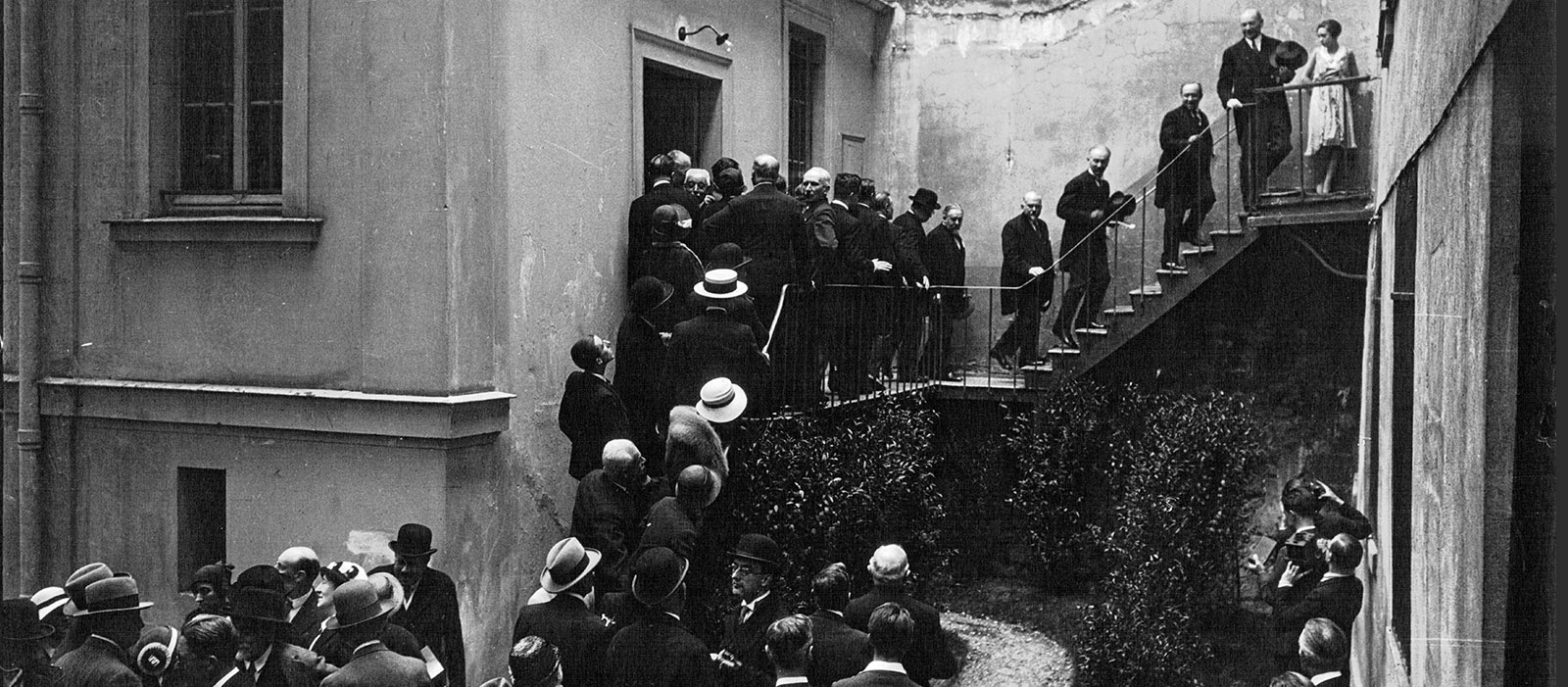Museum & Studio
From Studio to Museum
“My apartment is decidedly charming...”
Eugène Delacroix moved to Rue de Furstemberg on December 28, 1857 and gave up his studio on Rue Notre-Dame-de-Lorette. It was too far from the Saint-Sulpice church and the chapel he had been commissioned to decorate in 1847.
The artist was seriously fatigued and wanted to be closer to his work, as he was no longer able to manage the long trip every day. He was thus delighted to find a bright and peaceful apartment near Saint-Sulpice, through the intermediary of his friend, the paint merchant and painting restorer Étienne Haro.

Once he had settled in, Delacroix often expressed his contentment in his Journal and letters:
“My apartment is decidedly charming [...]. Woke up the next day to see the most gracious sun on the houses opposite my window. The view of my little garden and the cheerful appearance of my studio always make me happy.” (Journal, December 28, 1857)
Eugène Delacroix lived in this apartment until his death on August 13, 1863.
Creation of the museum
Called L’Atelier Delacroix when it first opened in 1932, the museum was championed and supported by a group of painters, collectors, and curators who were saddened by the thought of the artist’s final place of creation being demolished some seventy years after his death. None of them had known the artist or were related to him; they were motivated by a profound admiration for his art. In addition to their esteem for Delacroix’s paintings and drawings, the publication of his Journal in 1893 had granted them insight into Delacroix the artist and the man. This made him an admirable but familiar figure—a master they respected, but whose secrets and vulnerabilities had been disclosed.

Delacroix’s Journal remained a strong inspiration through to the late 1920s with the founding of the Société des Amis d’Eugène Delacroix presided by Maurice Denis. It brought a creative dimension to the task of saving the studio, which was ultimately accomplished thanks to the courage and determination of Maurice Denis. It was vital to preserve a site of such historical interest.
In 1971, the Musée Eugène-Delacroix became a national museum. The building’s façades and roofs on the courtyard and garden side, as well as the museum, the garden, and the studio, were listed in the supplementary inventory of Historical Monuments in 1991. With the 1992 acquisition of part of an apartment adjoining the rooms occupied by the painter, the museum was able to create a new reception space along with a media and reading room. In 2004, the Musée Eugène-Delacroix was attached to the public establishment of the Musée du Louvre.
The garden
When Delacroix decided to give up his large studio on Rue Notre-Dame-de-Lorette, in the heart of the then-fashionable Nouvelle-Athènes district, his choice of Rue Furstemberg was largely due to the existence of a small garden for his exclusive use with the possibility of building a studio there. He would therefore be able to live and work in a peaceful oasis of greenery at the heart of a vibrant neighborhood. The artist thus had his studio built in this garden of around 400 m2, hidden from view of the street.

With respect to the former state of the garden, the museum possesses a vital document with the heading: “Gardening memorandum for Monsieur Delacroix”, dated November 26, 1857. The invoice outlines a series of projects, including soil rehabilitation, the cutting and pruning of existing flowerbeds and vines, the creation of flowerbeds edged with thyme, and the planting of all kinds of rose, gooseberry, and strawberry bushes, as well as a number of trees. The aim was a varied, densely planted garden, but while the document points to Delacroix’s interest in its restoration, it provides no clear indication of its layout when he moved in, nor of the actual planting done. There is not a single drawing, not even a rudimentary sketch, to guide us.
A historical recreation thus being a tricky matter, the initial renovation in 1999 adopted a deliberately contemporary approach.
A new refurbishment, however, more sensitive and more appropriate to the overall atmosphere, has been offered for visitors’ enjoyment since December 2012. Fully financed by the Japanese company Kinoshita and carried out by Pierre Bonnaure, head gardener of the Tuileries, the project more closely reflects the writings in which Delacroix evokes his love of abundant country gardens.





